
archives for 07/2017
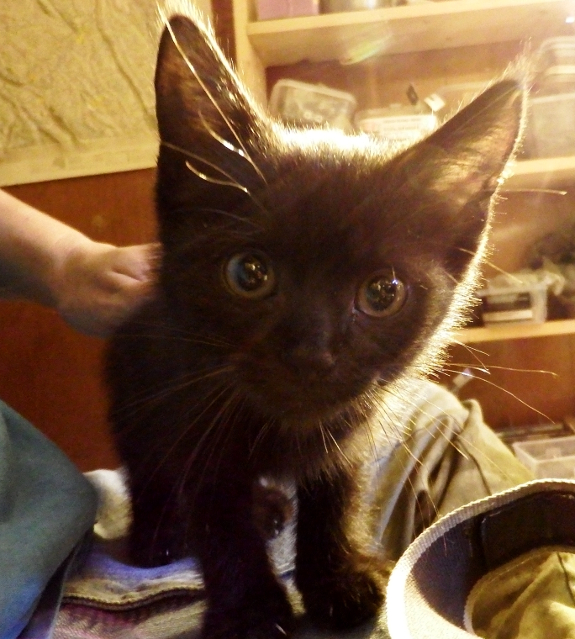
Look what I found
abandoned by the side of the road during my morning walk yesterday. Public
service announcement: please spay or neuter your pets!
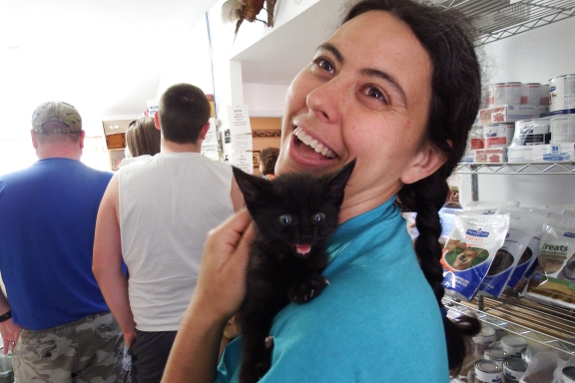
A happy ending for this
handsome little kitten.
Our local vet agreed to find
him a nice home if we paid for shots and surgery.
We love Dr Fuller and his
staff!
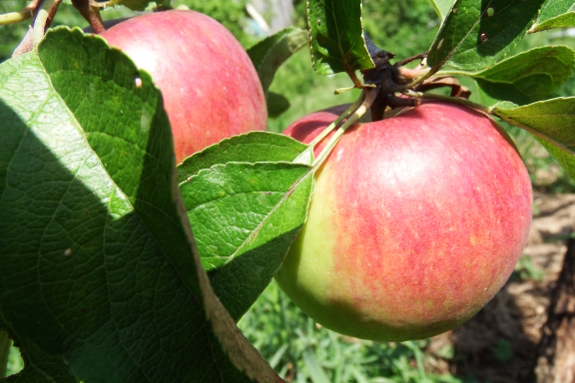
I never thought I'd
write this post...but Mark and I have decided to sell the farm and move
on. The reasons are many and varied, but what they boil down to is ---
we're ready for a new adventure.
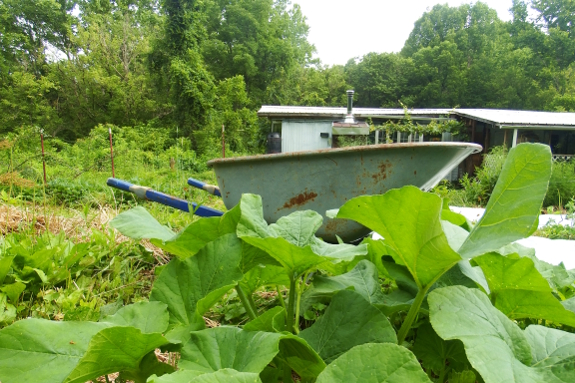
Ever since fourth grade,
I've wanted a big, sprawling homestead where I could raise every kind
of plant and animal imaginable. And this farm was the perfect solution
when I grew old enough to make that dream a reality. It was cheap
enough that I could afford the price while barely out of college,
and its size allowed us to make huge mistakes with relative
impunity. I've loved growing food, taking the goats out to graze, and
playing in the creek, and Mark has loved the independence the farm
provided for him to create a microbusiness and scratch his inventing
itch.
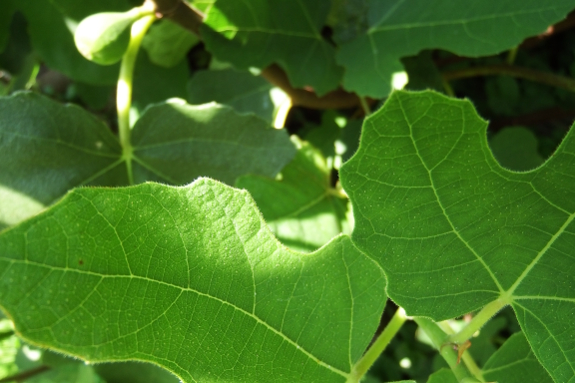
But they say that we
become entirely new people every seven years. And the new person I've
become wants something slightly different. I still crave isolation and
room for a garden...but it doesn't need to be as huge of a garden and
I'd like more cultural and social opportunities nearby. Writing fiction
has become a much higher priority for me in recent years, which has led
me toward simplifying my homestead life so I have the leisure to pound
away on the keyboard without guilt, and Mark feels the same way about
his film aspirations. Meanwhile, we also want to plan for aging, which
meant either pouring money into the driveway...or pouring that same
money into something smaller somewhere else.
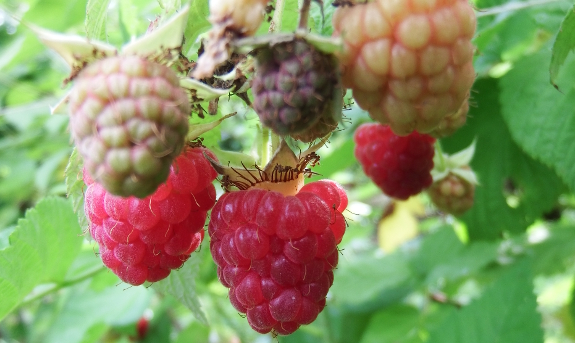
To cut a long story
short, we're beginning the long, scary process of severing ties here
and building new ties somewhere new. We plan to offer this farm to our
neighbors first --- it is, after all, the neighborly thing to do. But
if they're not interested, we'll be posting about a ready-made
homestead for sale soon. So, if you'd like to slip yourself into
fifty-eight acres of potential (some of it already realized), start
counting your pennies and thinking about a change of your own. And for
everyone else --- don't worry, the Walden Effect will continue...we'll
just be opening a new chapter on a slightly different life. More
details on that to come in subsequent posts....
We're moving, which
means we need to dramatically reduce our inventory
of Avian
Aqua Miser Originals.
This is our flagship product and is still the
best option for many chicken keepers. The half-gallon waterers are each
good for up to 5 adult chickens or 15 chicks and they're our very
favorite way to keep bedding dry and animals hydrated in tractors and
brooders. In winter, it's easy to bring Originals in overnight so they
don't freeze, and the waterers are also a breeze to hang on the side of
an isolation coop for a hen who's sick and needs a little TLC.
Usually, we charge $30
apiece for these waterers. But to reduce our own
moving costs, we're selling 3 for $30 with free shipping (or 5 for $40,
also with free shipping). The buy buttons are above. Please allow up to
three weeks for delivery in the U.S., and I'm afraid we're unable to
ship outside the country at this time. Inventory is limited so order
soon --- once they're gone, they're gone.
Thanks so much in
advance for anyone who buys our waterers or tells
your friends. We really appreciate the support and are excited to tell
you all about it as we embark on our new adventure!
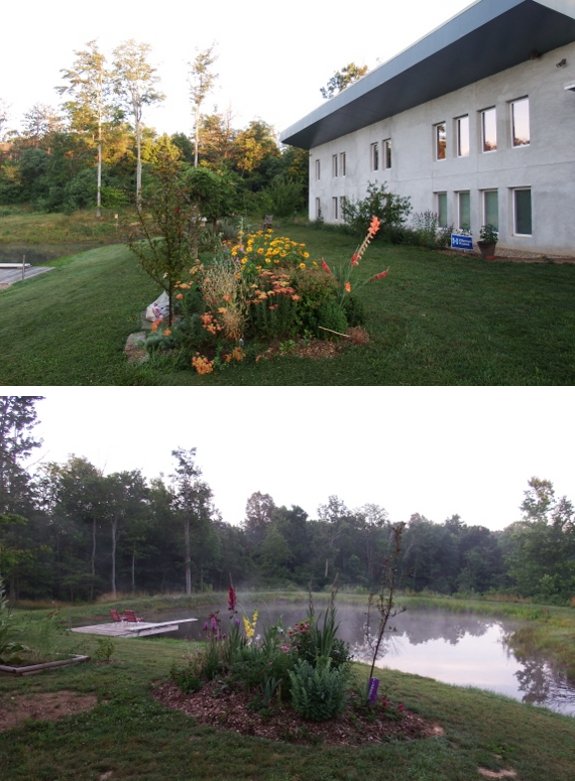
We celebrated July 4th
weekend with a fact finding tour of Athens Ohio.
After a short time being
there we could feel it is going to be a good fit for us.
We stayed in The Passive House in Athens.
We only spent the evening and
night there but it was great. I wished now that I'd taken a picture of
the beautiful wood beams. Whoever built it is a true artist when it
comes to home building. Anna and I both give it two thumbs up and would
stay there again if we need to.
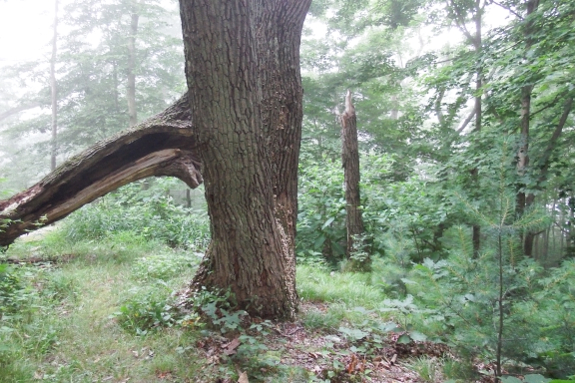
First of all, I wanted
to thank everyone for your well wishes, both here and via email. It's
meant so much to us to be embraced with such positivity and kindness.
Please know that your gestures have been noticed and appreciated!
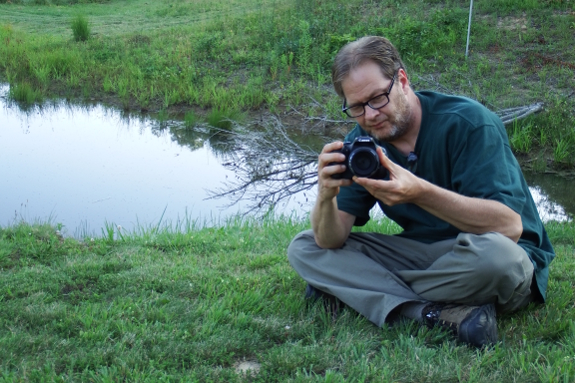
Now...on to the
adventure! Saturday, unable to think about anything other than our
transition, we
filled all of the feeders and waterers up high and hit the road. Mark's
working up a video log with more in-depth thoughts, so I'll keep this
post fact-light and picture heavy.

The difference between
land-searching now and land-searching a dozen years ago is astonishing.
Nowadays, everything is on the internet, either via Craigslist or
realtor sites. So after zeroing in on our intended destination ---
Athens, Ohio --- we hit the web and hunted high and low until we found
a property we thought would work. Then we got in the car and drove
north.
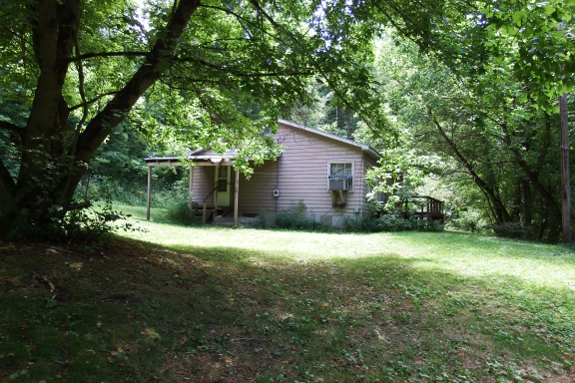
The first property was a
disappointment. Although it was surrounded on three sides by the
national forest and had loads of potential, it was going to take a
massive amount of time and money to bring up to speed. Since part of
the purpose of this move is to take a step ahead rather than a step
back, we decided to give this one a miss.
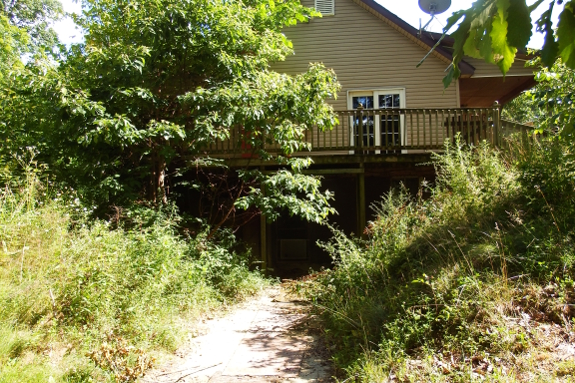
The second property
became The One That Got Away. Although there were some downsides
(including a price at the high end of our possible spectrum), the
property was pretty close to perfect. A small house only a little
larger than our current living space but with half of that space
consisting of a livable basement, a beautiful shed/barn, and fruit
trees in production, plus all of the isolation I crave. We contacted
the realtor as soon as we hit our crash space for the night...and found
out the property had been sold that very day to someone else.
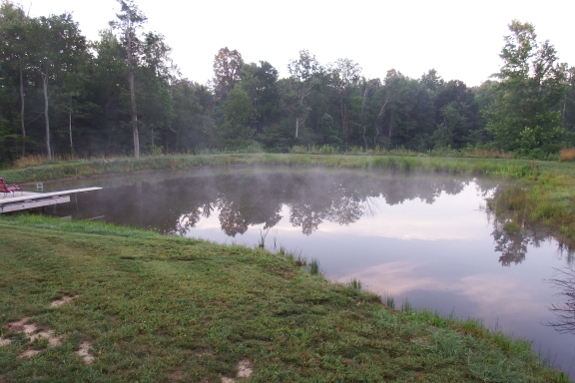
Of course, we didn't
expect to find our homestead during a whirlwind, two-night trip. Our
primary goal during this first adventure was to check out the area and
see if we were even on the right track. And, after spending the night
in the Passive House
and visiting the local Unitarian Church, Mark and I both came away
confident that this area would indeed be a very good fit for us. Looks
like our to-do list will change from planting and weeding to packing
and land hunting for the foreseeable future.
Thanks for coming along
for the ride!
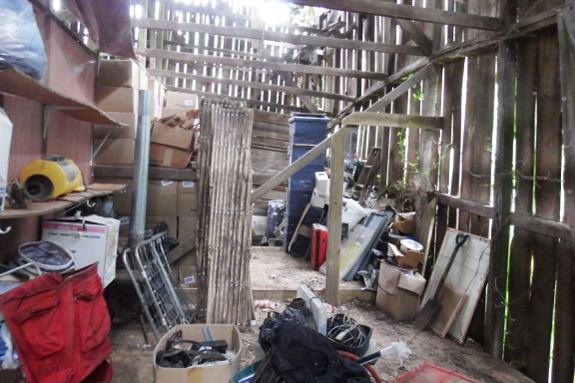
When I first learned
that Mayans traditionally burned down all their houses and started
fresh every 52 years, it sounded crazy. But after eleven years on our
farm...I can see the point. Since we're only able to drive across our
floodplain a few times a year, we tend to prioritize mechanized hauling
to bring in heavy items and bring out household garbage. Which means
our barn is full of useful items that are nonetheless no longer useful
to us.
After some thought, Mark
and I have resolved to leave most of it behind...which feels
astonishingly freeing. Still, we'll bring down resale value if we
ignore the clutter entirely. So we'll be spending the next few weeks
sorting. A burn pile outside for flammables that are unlikely to help
anybody, an area of
probably-unuseful-but-we-don't-have-a-way-to-haul-it-out stuff, a more
neatly stacked zone of farm friendly items, a shelf of light but
high-dollar goods that are worth selling before we go, borrowed items
to return, and finally the stuff we actually intend to bring with us.
After two hours of
sorting, we made it through about 10% of the barn. The only thing I'll
be keeping out of that area is business receipts for tax purposes,
while Mark is starting to compile the most useful hardware and tools as
his contribution. It looks like we'll really be able to slim down
enough to make the move! (I wasn't so sure....)
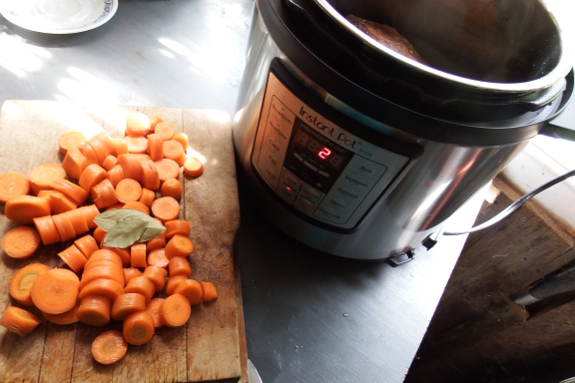
Before we decided to
move --- and I realized anything we carried in would soon have to be
carried out --- I caved and bought an Instant
Pot.
These electric pressure cookers are a fascinating product, designed to
cook anything from rice to pot roast to cake at the press of a button.
There's a sautee feature for use with the lid off, then you can lock
down the lid very safely for fast, high-pressure meals.
Honestly, I could see me and Mark using this as our sole cooking heat
source if we bought or rented an unfurnished space and weren't ready to
rebuild our kitchen right off the bat. So maybe the purchase was a good
move after all. It's definitely on my list of items worth being carried
out across the swamp.
Our hardy
kiwi's continue to plump up as the Summer moves along.
It's one crop we have not
irrigated that seems to not need it.
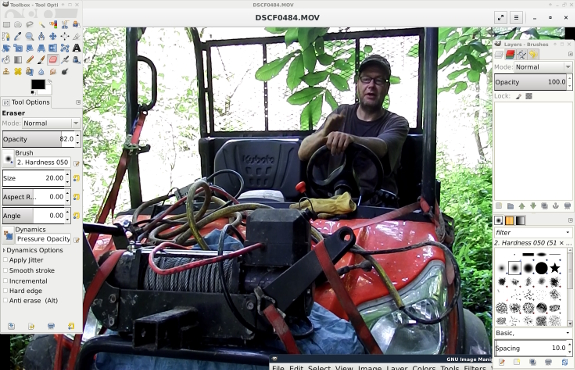
We've had a slew of
questions, both here and via email, which we haven't had the time to
answer in depth. Meanwhile, several of you have asked for videos in the
past, and I thought this move might be a good opportunity to share that
type of content via Patreon.
The idea is simple ---
patrons sign up for whatever level of support they feel comfortable
with, and in exchange they gain access to member-only videos hidden
behind a paywall. Since the videos aren't available on the open
internet, Mark and I will feel more comfortable sharing nitty gritty
details we don't want to broadcast to the world at large. Meanwhile,
your donations will help us purchase a larger tract of land if the
right property comes up for sale before this farm finds a new
owner.
But the project will
take time and energy which we could also be expending on our move. So I
wanted to get a virtual show of hands. Would you be interested in
supporting the Walden Effect via Patreon during our transition? If so,
comment below and be counted (and feel free to tell us what type of
questions you'd most like answered). Thanks in advance for your support!
Huckleberry has decided the only thing he needs to take on the upcoming move is his basket and little brother.
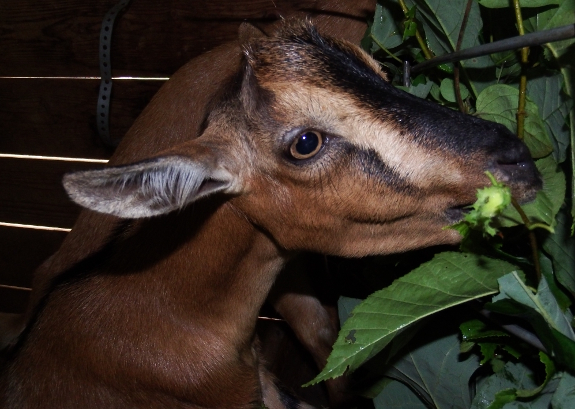
Several of you have
asked about the future of our goats. Will they come with us or will
they find a new home?
Although the decision is
hard, we're opting for the latter. I regained some of the joy of goat
grazing after Artemesia died, but I have to admit the experience has
never been quite the same since my beloved goat left the farm. Since I
also stopped being able to drink milk last summer, suddenly the animals
that were intended to be dual-purpose livestock turned into moderately
expensive pets.
Given that they are just
as much companions as working animals, though, we're taking our time to
find Aurora and Edgar just the right home. We have one potential lead
on a family who might spoil them in the manner to which they've grown
accustomed. Fingers crossed they'll find someone else excited about
milk and grazing in the very near future!
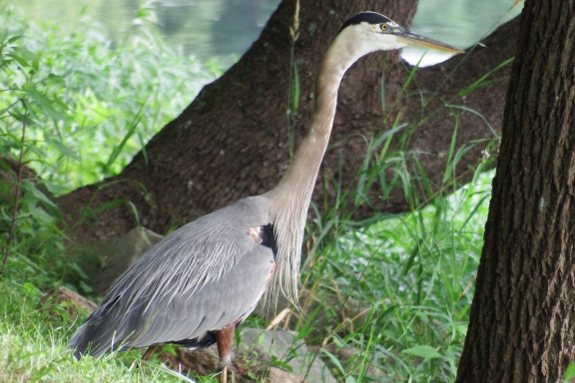
After a week of
research, Mark and I are starting to arrow in on our land-hunting
priorities. They're different this time around than they were when I
sought out our current farm a dozen years ago.
Counterintuitively, we're actually looking a lot smaller --- 58 acres
was awesome for experimentation when we didn't know what we wanted, but
we'd rather contract and move closer to a city now that we know which
aspects of homesteading are our favorites. Currently, we use about 2.5
acres of our existing homestead, and even that feels like more than we
want to manage as we grow older, expand our interests, and turn into
more weekend homesteaders.
What's the sweet spot
for a mature homestead? I'm guessing somewhere between 5 and 10 acres
will give me the isolation I crave, room for extensive gardening, and
still fit within our price range. Perhaps the classic Five
Acres and Independence
was on the right track?
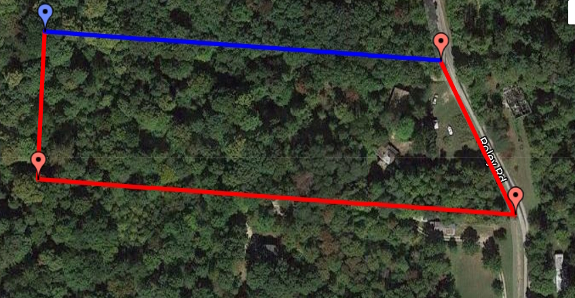
The
Homestead That Got Away had been sold less than a
year ago at a sheriff's sale...which got me wondering if I should
peruse those listings in addition to craigslist and real estate sites.
Sure enough, I found a potential homestead on a county website in short
order. But was it worth it?
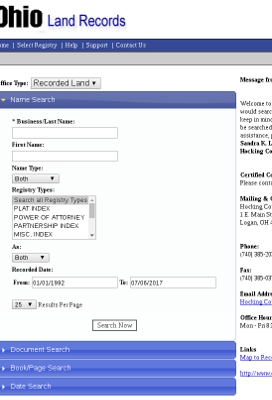 After intensive research, I found out why the
average homebuyer probably shouldn't stalk sheriff's sales. These
auctions are a way for a bank to recoup their investment after a
foreclosure...but lenders don't let properties go for a song. Instead,
in 80% of sales, the bank buys the property back rather than losing
money on the endeavor.
After intensive research, I found out why the
average homebuyer probably shouldn't stalk sheriff's sales. These
auctions are a way for a bank to recoup their investment after a
foreclosure...but lenders don't let properties go for a song. Instead,
in 80% of sales, the bank buys the property back rather than losing
money on the endeavor.
The next hurdle to be
aware of is additional mortgages. This was the point that killed our
interest in The Homestead We Threw Back, since an online title
search suggested that the mortgage resulting in the foreclosure
wasn't the only lien against the property. If we'd bought that property
without a title search, we would have owned the land...plus the
obligation to repay the primary loan. Suddenly the selling price got a
lot higher than we thought!
Of course, it can also
be tough to thoroughly research foreclosed properties since the current
owner might not be thrilled about you tromping across their land. Given
the the high risk involved in buying a pig in a poke, we're probably
going to steer clear of this source of bargain real estate for
now...although we will check the bank sites in a month or two since
foreclosed properties often end up there for less than they went for at
the sheriff's auction.
Back to the drawing
board!
The new and improved PVC
chicken feeder worked
great for a few weeks but started clumping again.
I know it's being protected
from rain, but the early morning dew condensation seems to add up after
a while and clump the pellets together.
Looks like it's back to
throwing the feed on the ground every morning.
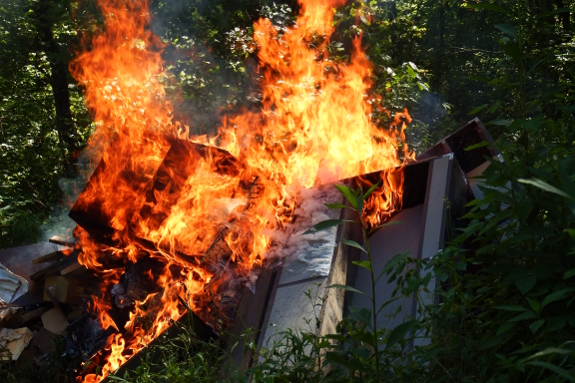
After burning the first
of what I suspect will be several piles of flammable debris, I wish I'd
caught on to the value of fire earlier. Because Mark and I are both
seeing how our early actions on the farm started the cascade of STUFF
that eventually took over the barn, and one of those actions was
putting away not-very-good lumber/furniture for later use.
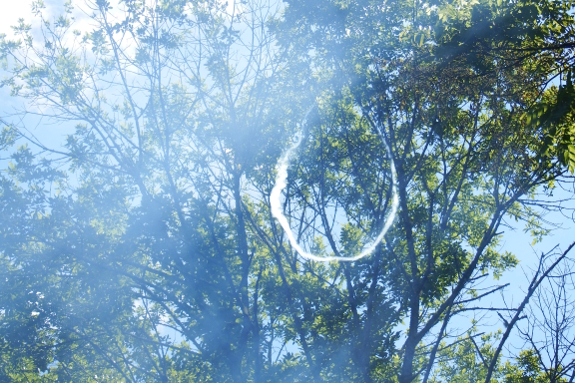
While it's great to have
a stash of two-by-fours and other quality building supplies on hand,
odd-shaped debris and ancient particle-board furniture that came with
the trailer really should have been burned a decade ago. Live and
learn! I suspect we won't make the same mistakes in our new place.
(We'll be sure to make new mistakes instead.)
I think this type of chicken feeder would work fine in an enclosed coop that blocks the morning condensation that creeps into an open chicken tractor like this one.
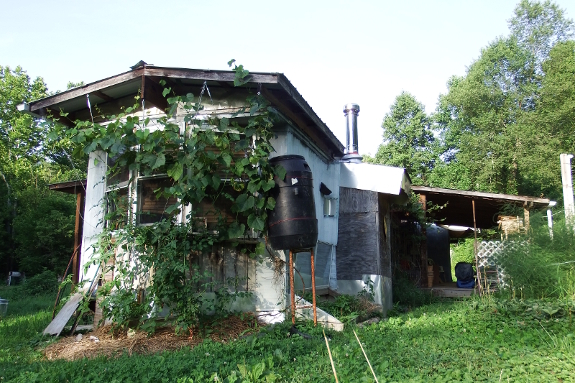
While Mark is
laboriously picking through his tools and hardware, trying to decide
what to leave and what to take, I'm poring over my plantings to see
what can be transplanted or rerooted in a new location. Of course, the
varieties that grow well here might not grow well there. But it's worth
a shot to take my favorites along since we'll only be half a zone
colder there than here (depending on what kind of microclimate we
settle into).
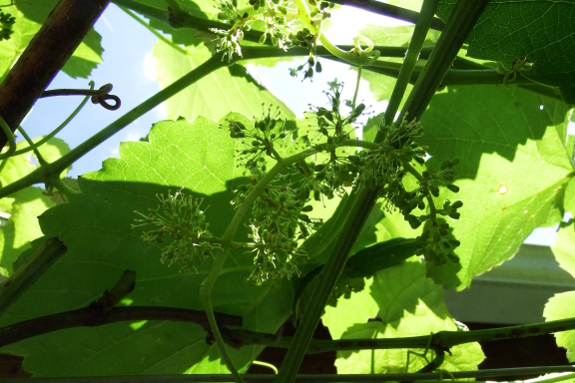
What's on my to-take
list? In the next week, I plan to pot up a lot of my perennial herbs
along with a few annual vegetables (like the brussels sprouts who are
growing so gamely indoors). Among the woody perennials, I'm going to
try to summer-root my favorite grape --- Reliance --- even though
winter rooting is much easier. I'm much more confident of my ability to
dig up and pot a young raspberry of each variety, and I'll probably do
the same with my favorite strawberries --- Honeyoye and Sparkle.
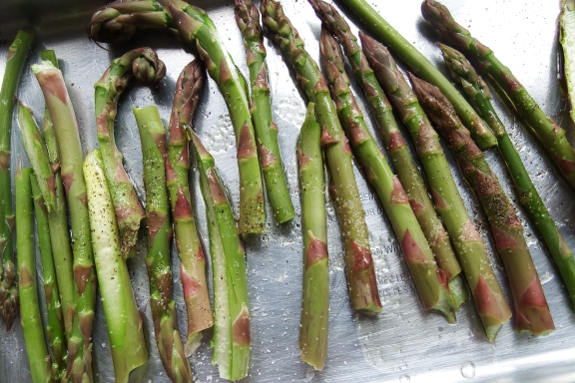
Fruit trees I may just
have to begin again from scratch, unless the new owners let me come
take cuttings during the dormant season. But, to be honest, what I
think I'll miss the most is our mature plantings of asparagus. I guess
that's what I'll have to prioritize putting in first in our new place!
David and Mathew seem to be the perfect people to give our herd a good home.
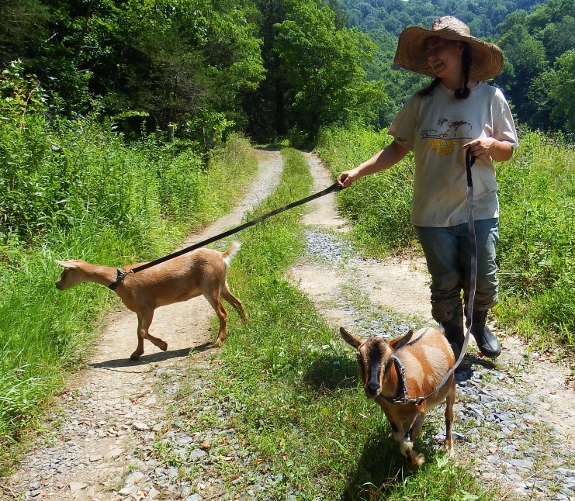
Although I was sad to
see Aurora and Edgar go, I think their new home on Goat Hill is
bound to be an exciting chapter in both of their lives. For me, the
trickiest part is going to be working a new pro-lethargy activity into
my evening routine. Maybe a photography hour or a round of potting up
plants can fill a similar niche?
A tree fell blocking our main
walking trail.
The battery
powered Oregon chainsaw
was as easy to set up as slapping a charged battery in and filling it
up with chain oil.
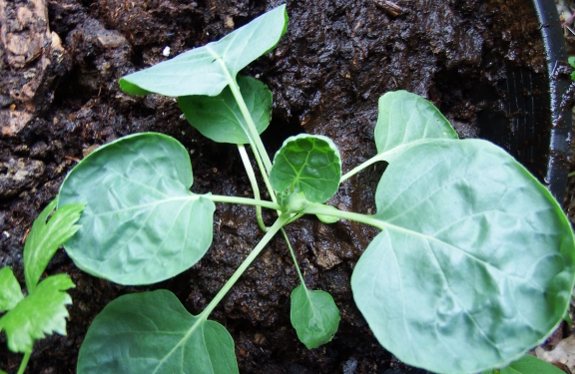
For about a week after
deciding to move, I basked in the knowledge that there was no point in
weeding our garden. Then...I went into withdrawal and started
pondering potted plants to take with us. But how much space do you
need per plant when growing vegetables in pots?
| Vegetable |
Gallons per
plant |
| Asparagus |
1 gallon |
| Broccoli |
5 gallons |
| Brussels sprouts |
3 gallons |
| Cabbage |
2 gallons |
| Celery |
2 gallons |
| Chives |
1 gallon |
| Cucumbers |
1-5 gallons |
| Kale |
1 gallon |
| Peppers |
2-3 gallons |
| Squash |
5 gallons |
| Swiss chard |
2 gallons |
| Tomato |
10-20 gallons |
I drew the information in the table above from various sources, some of which I'm dubious about. (Broccoli needs 5 gallons but the larger Brussels sprouts only need 3?) Still, it seems like a good starting point, and I potted up celery and a pepper out of the aquaponics setup along with five Brussels sprouts Wednesday afternoon.
Now for the big questions --- was I nuts to fill the pots entirely with well-composted horse manure? (I usually mix manure half and half with potting soil for containers, but I didn't want to buy any and had lots of manure on hand at the potting area.) Will I be able to keep the pots irrigated in the summer heat far from any water source? And if I continue to be this exuberant with my potting up, will there be room in the car for anything else when we drive north? Only time will tell....
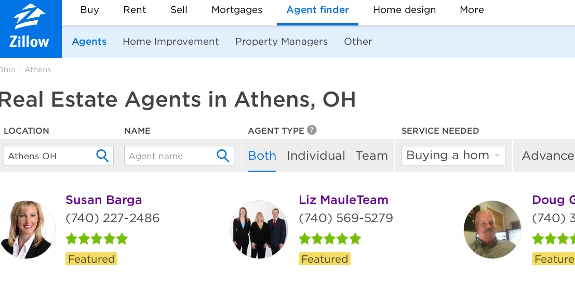
A couple of you
suggested tracking down a designated buyer's agent to narrow the list
of potential farms and also to negotiate the final deal. Financially, a
buyer's agent makes a lot of sense since sellers have already factored
the buyer's agent's fee into the list price, so you're not paying
anything extra for the service. Unfortunately, Mark and I spent a
couple of weeks contacting potential realtors and had trouble getting
anyone to give us the time of day.
Then I discovered Zillow's
realtor search feature.
By narrowing the field to a certain region, choosing "Buying a home"
from the "Service needed" dropdown, then going to "Advanced" and 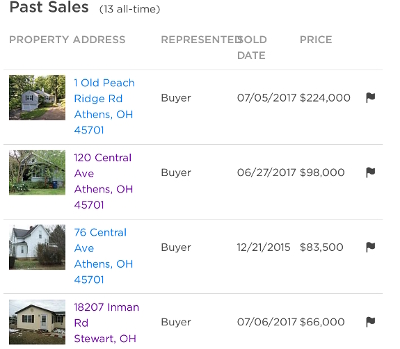 selecting
"Buyer's Agent" as the specialty, I was finally able to come up with
over a hundred possible choices.
selecting
"Buyer's Agent" as the specialty, I was finally able to come up with
over a hundred possible choices.
My next step was to
narrow the playing field by clicking on each realtor's profile and
eliminating everyone whose "Past sales" listings were out of my price
range and/or in which the realtor acted as the seller's agent rather
than as the buyer's agent. Finally, reviews helped me select a realtor
who has a good reputation for answering emails and staying in touch.
And, sure enough, I
found a buyer's agent who's willing to give us the time of day! Maybe
now we can stop spending quite so much time househunting and can finish
getting our current homestead sorted and ready to move.
If we haven't used a hand tool in a year or more it might not be worth moving.
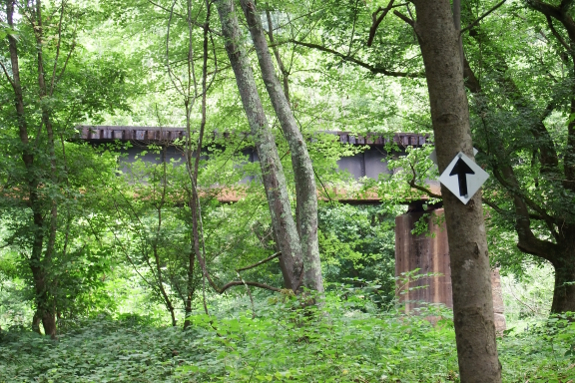
Mark and I added up all
of the places we've lived for long enough that they felt like home a
few days ago. He came up with 22 and I came up with 11.
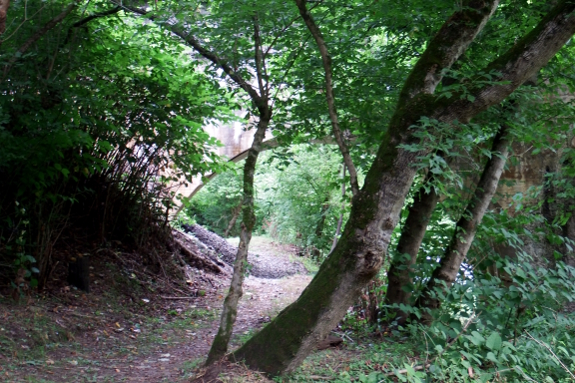
Which puts our current
move into perspective. Sure, I've lived on this farm longer than
anywhere else in my life (although it's only second on Mark's more
extensive list).
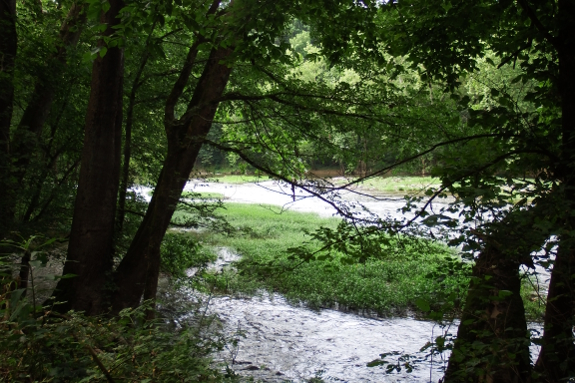
But the river of life
keeps flowing on by, and sometimes you have to jump in a kayak and let
it carry you for a spell before you make a new camp.
Which is a long way of
saying --- I'm both terrified and exhilerated by the idea of pulling up
roots and finding a new place to call home. And if this one doesn't
work out...well, then we'll just move on to my lucky 13 and to Mark's
home number 24. The only true regrets in life are opportunities
untested. Onward and upward!
I figure if an apple doesn't come off the vine easily maybe it needs more time.
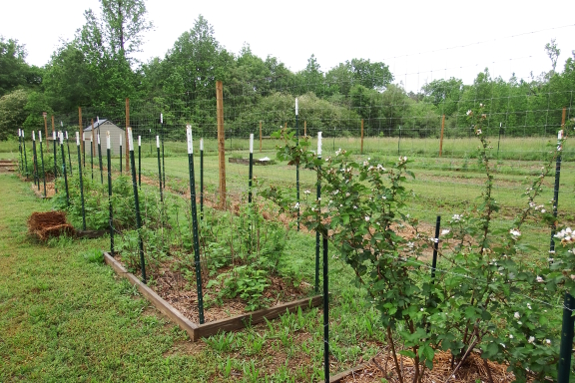
We built our current
garden higgledy piggledy as the whim struck and as our energy allowed.
But the plan for homestead 2.0 is to figure out how much garden area we
need then to put in a critter-proof fence from the get-go.
Daddy's newly fenced
garden is my current inspiration. He used 10-foot 4x4s (sunk two feet deep) every 16 feet,
with 8-foot t-posts (with rebar exenders) in between (except for the corners, which had 4x4s
at 8-foot intervals). Add in woven wire fencing plus some brace wires
and you're done. Total cost --- $1,000 for 100x60 feet (about 0.14
acres). "No deer so far," he reports.
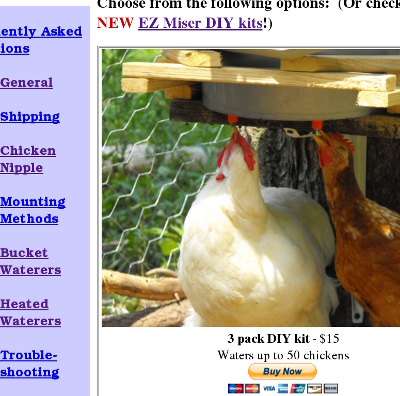 The response to our Avian Aqua
Miser Original closeout sale has been overwhelming. Mark's been
busy building waterers ever since, and he expects to be entirely caught
up by Wednesday.
The response to our Avian Aqua
Miser Original closeout sale has been overwhelming. Mark's been
busy building waterers ever since, and he expects to be entirely caught
up by Wednesday.
I didn't want him to get
bored...so I slashed prices on the rest of our inventory. We're selling
out of premade EZ Misers for the last time before our
move --- $40 with free shipping. Meanwhile, we'll probably keep selling
kits, but we're lowering prices there too in order to reduce inventory.
Avian Aqua Miser
Original kits will
now water your chickens for as little as 18 cents per bird while you
can get a 2-pack EZ Miser kit for $25 with free shipping.
Thanks in advance for
giving Mark's POOP-free waterers a try and/or for telling a friend. We
appreciate your support as we gear up for our move!
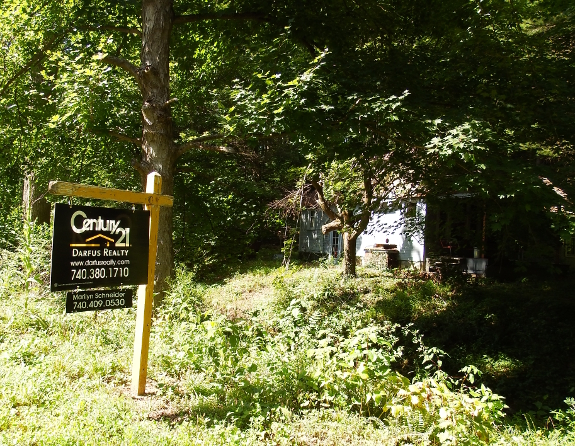
We made another
whirlwind trip to Ohio to look at a property...that, unfortunately
turned out to be another dud. Luckily, our realtor suggested a
different offering that came much closer to hitting the spot.
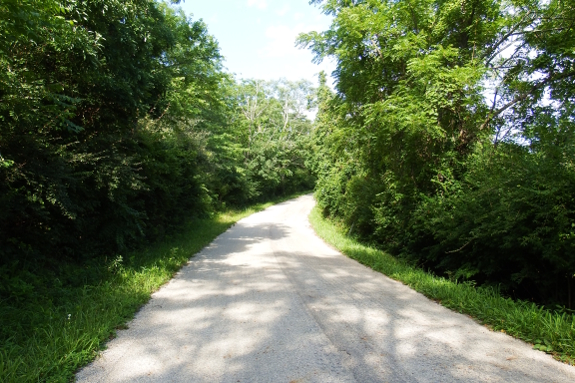
As we arrow in on what
actually feels right, though, we're having to make some tough
decisions. Do we want more land and more house further off the beaten
path (what I chose the last time around and was very happy with for
very many years)? Or do we want to go in the opposite direction and buy
unimproved land to trailerstead on closer to the location
that drew our attention in the first place?
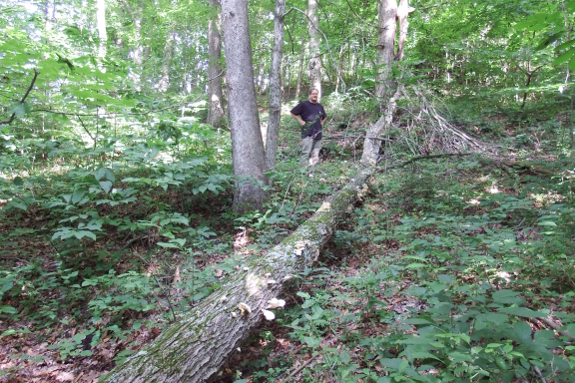
I've learned over the
past year that I'm willing to drive about 15 minutes to something
fun...while 45 minutes or longer means I only take the plunge rarely
and after extensive vaccillation. Since one of my primary goals of this
move is to give myself a wider range of artistic, social, and
intellectual stimulation off the farm, part of me thinks we should
focus on proximity at the expense of all else. (Mark would love
proximity --- he's less of an isolationist than I am.)
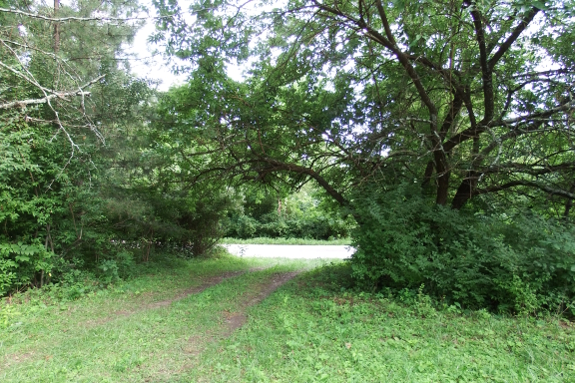
Of course, the
homesteading part of me twitches when I think of all the livestock
doors I'd be closing by settling near neighbors who might not be
thrilled to hear a cock crow (or to see a trailer move in next door).
Meanwhile, the hermit part of me cringes away from being able to see
the road...and of the greater likelihood the area we choose might grow
up around us and squeeze my need of countryside out.
Decisions, decisions. No
matter which direction we go in, I'm glad we made another trip. Images
on the internet really hold no candle to feet on the ground.
We cut down a few trees today to take advantage of a dry walking path that the Kubota can use as a detour to bypass the wet area.
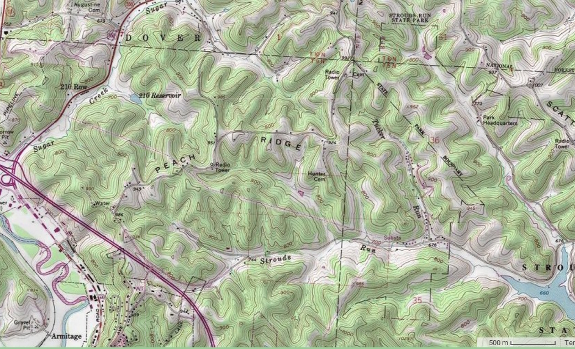
The property Mark and I
are currently considering is on top of a ridge --- high and dry.
Microclimates have such a huge impact on gardening, and there are major
pros and cons to ridges over our current valley location.
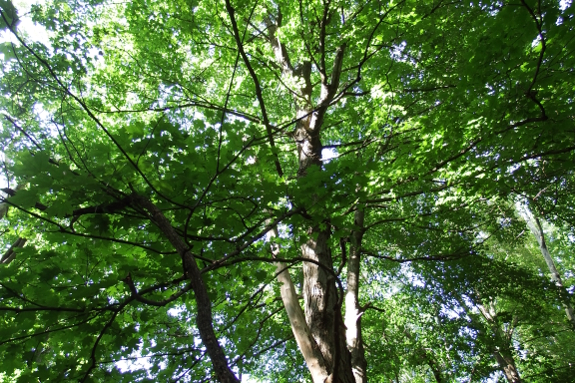
On the minus side,
ridges are more exposed to storms and wind, something we've never had
to worry about in the past. In an area where rainfall is already 20%
down from what I'm used to and where we'd be depending on city water,
we'd have to get more clever about irrigation and rainwater catchment.
Meanwhile soil also tends to be less rich on ridgetops since erosion
naturally carries topsoil downhill.
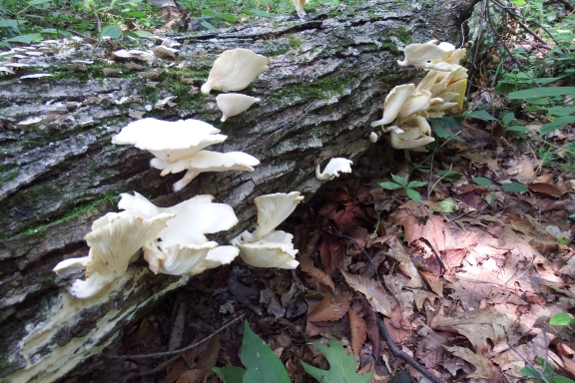
That said, never again
having to deal with waterlogged soil has something to recommend itself
after over a decade in what I lovingly call a swamp. Fungal diseases
should be rarer and ridgetops can (at least sometimes) be less
susceptible to late spring freezes since cold air naturally flows
downhill during the course of a night. And we wouldn't have to put up
with the lack of winter sun that further chills our current farm
either, which may make a ridgetop in zone 6A no harder for tender
plants to survive than a north-facing bottom in zone 6B.
I'd be curious from
those of you currently gardening on ridges. What other pros and cons
would you put out there about these more exposed locations?
We don't use this furniture dolly much, but when we do it really saves energy.
Watering a garden with
soapy water probably won't be a problem, but it depends on the
individual plants being hydrated (and whether you do it once or keep
doing it, thus letting problematic compounds build up in the soil).
The main problem from a
plant point of view would likely be salt/sodium and/or boron building
up. But bleach can also kill soil critters, causing long-term damage to
ecosystem health. Bar soap might increase the pH of your water, which
would only be a problem if you're watering acid-lovers like blueberries
or rhododendrons.
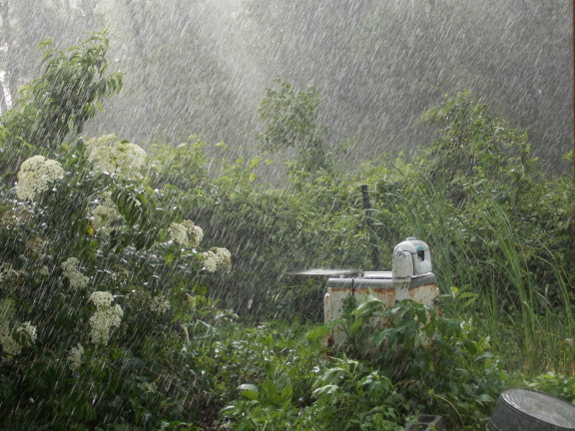
The more worrisome
problem would be the potential for fecal coliform from bathwater to
land on edibles that will be harvested soon (like leaf lettuce), making
you sick after you dine. That's why bathwater is often considered more
blackwater than greywater (unlike the effluent from your kitchen sink
or non-diaper laundry, which tends to be safer). To stay on the safe
side, it's better to apply these dicey types of liquid to ornamentals,
or to edibles that won't be harvested for several months.
The upshot? Read the
label of your cleaning products if you plan to toss them down the
drain. Then understand the difference between greywater and blackwater
and you'll be all set!
After some trial and error I've discovered the Super Winch can ride all the way to the side and still allow for a passenger if she gets in from the driver's side.
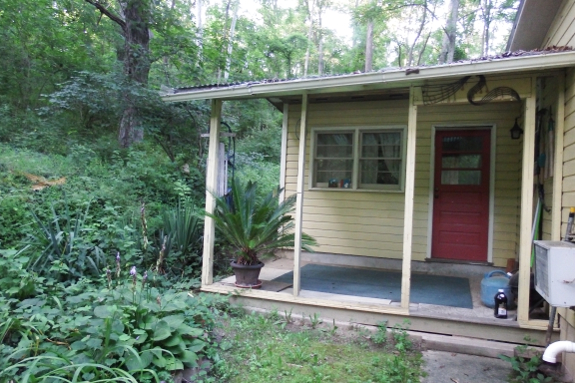
Last time I bought land,
I was just out of college and dirt poor. I saved every penny, hoping to
achieve $10,000 within the next decade and buy a 10-acre farm with
cash. But when I was $2,000 in, a very kind friend jumped into the
breach and offered me an interest-free loan on a larger amount. I
bought the largest ugly-duckling property I could comfortably afford,
paid the friend back several years later when that property allowed us
to live off our microbusiness,
and was endlessly grateful for the jumpstart.
This time around, Mark
and I are being more conventional. We've calculated the likely selling
price for this place based on recent sales in the region, and we're
looking for properties in that same range. Rather than selling before
buying, though, and being entirely debt-free, we decided to get
pre-approved for a mortgage so we could spend a little more money up
front but do things in the easy order --- move before we put this place
up for sale.
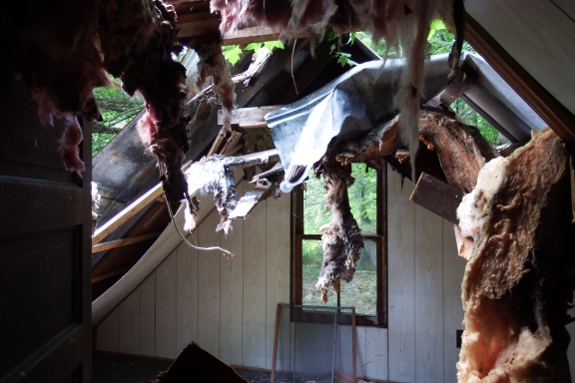
In the process, I've
learned a lot about land buying that I thought the conventional among
you (probably everyone except younger me!) might benefit from. First of
all, by using a site like Lending Tree to compare rates, you're asking
to join masses of email and phone lists --- beware! None of those
potential lenders will answer a simple question --- they all want every
ounce of your personal and financial data so they can take you all the
way to preapproval. Meanwhile, if you're self-employed, the data those
intaker officers need dives all the way down to your tax returns from
the previous three years. Wow, that's a lot of information to share
with looky-loos.
And yet, after extensive
research, I learned that rates aren't even set at the preapproval stage
and that most lenders will give you approximately the same rate as all
the others, with that amount depending on your financial portfolio and
credit history. So you might as well instead select a lender based on
reviews and other factors, such as those I discuss below.
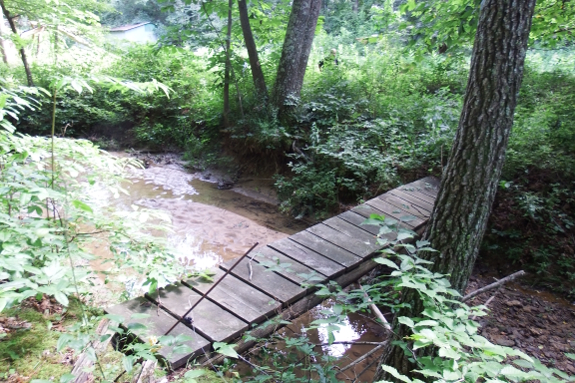
The next hurdle to
bridge is the difference between buying a house and buying an acreage.
10 acres seems to be the dividing line between the two, but it also
matters whether the dwelling passes muster (many owner-built homes and
old farm houses won't) and whether your home-to-be is on wheels (a
higher interest rate) or on a permanent foundation. Keep in mind, also,
that if you buy a home instead of land, you'll need to pay home owner's
insurance as a mandatory part of your mortgage agreement.
The trick if you want to
buy a farm rather than a house with a few acres appears to be going
with a local bank rather than with a big company. By contacting a bank
in the community we plan to move to, we were given the option of
choosing a non-federally-approved loan that will cover unimproved land
or a federally-approved loan that won't. The former has a lower
interest rate...but one that will change over time (a problem for us
only if we don't manage to sell this property within the first fixed
term of three to five years). Improvement level also makes a difference
on properties that lack domiciles, so pay attention to the presence or
absence of developed water, electric, and septic on potential
properties. Finally, the percent you're expected to pay yourself will
vary depending on which type of property and type of loan you choose to
pursue.
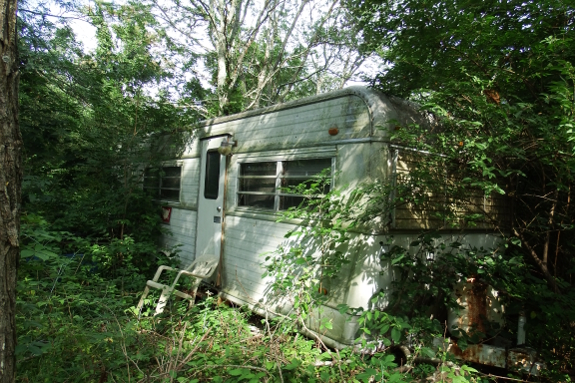
Phew! Learning what I
just put into this post took about a week and a half of phone calls,
web searching, and emails to ferret out. On the plus side...youthful
me's anti-debt ways means our credit is excellent so we just got
preapproved. Now we're ready to really get serious about this move.
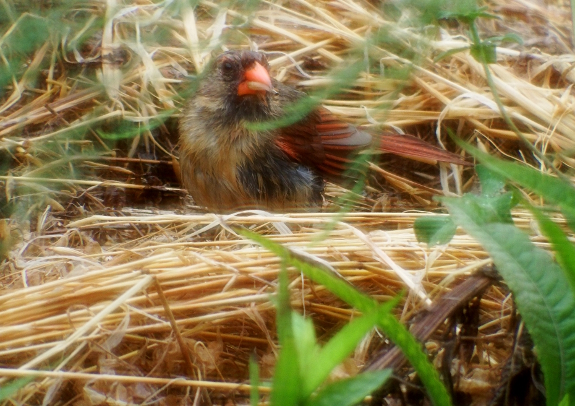
So how did the thicker,
whitish plastic do for solarization? The layer did a good job
killing off mature oats and some weeds, but the ornerier ground ivy
didn't get hot enough to die. Looks like the thin, clear plastic that
deteriorates in a single season is still the best option for
solarization...unless you want to pay top dollar for UV-resistant
greenhouse film.
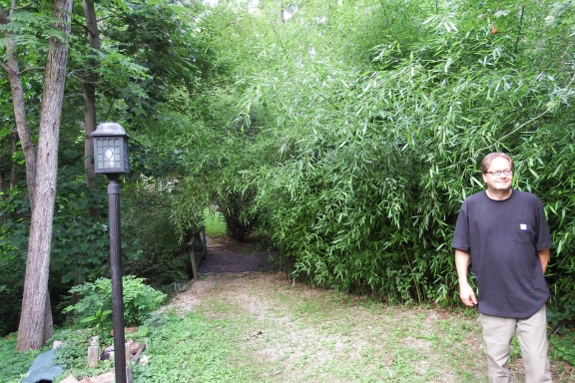
It took me a couple of
weeks to accept the reality --- that nowhere we could afford in the
Athens, Ohio, area will be as private as our current farm. Currently,
we hear a neighbor driving his tractor through hay fields a couple of
times a month in the summer and can see another neighbor's light in
winter if we stand in a certain part of the yard and turn our heads
just right. Otherwise, when we're home, we're entirely alone...and I
revel in the solitude.
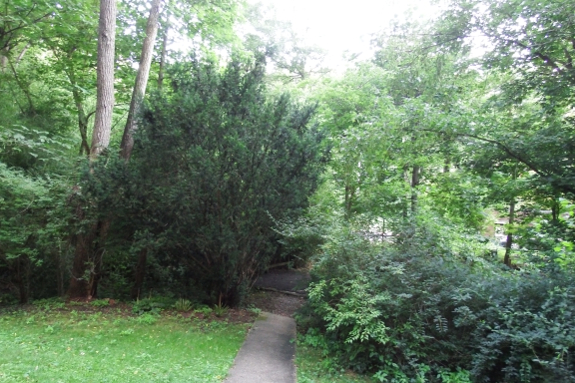
However, the second
Airbnb we stayed at taught me that you don't have to be far from the
road to feel quite private. The house on that property was set back 134
feet from a quite busy road (yes, I did pace the distance). And, thanks
to a grove of bamboo, encircling trees, and a well-placed evergreen on
the inside, the house felt as private as I could have wished.
I'm thinking the trick
with privacy plantings is to include fast-growers, evergreens, and
shrubs of various densities. Actually, it sounds quite a lot like planting
a hedge.
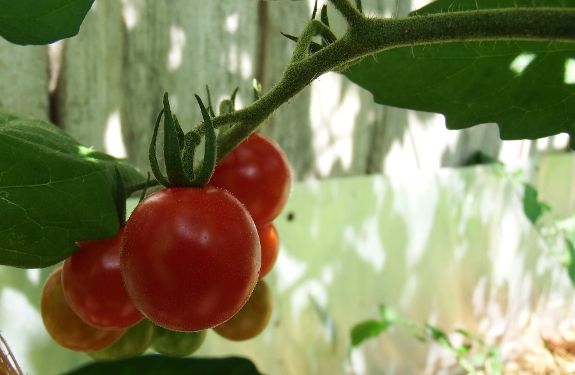
With the move on the
horizon, I've taken a very laissez-faire approach to the garden.
Despite the turn toward the dry, I haven't watered, and I haven't
worried over insect or critter damage either. And even though there
wouldn't be enough to preserve, there's still been plenty to eat.
Actually, since we're
trying to eat our freezers bare so we won't waste food, there's been a
bit too much in the gardens. Luckily, I can let some go to seed ---
after all, I'll want those propagules for next year's garden.
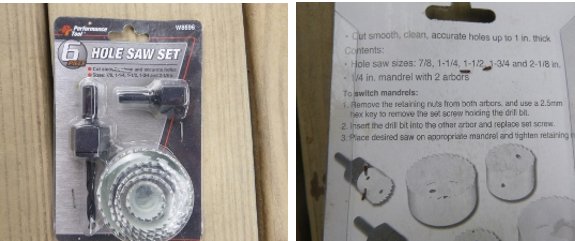
Will the hole saw kit in our EZ miser DIY kit fit
into a regular consumer drill?
Thanks for the question
Alison. The answer is yes.
The mandrel is 1/4 inch and
the sizes included are 7/8, 1-1/4, 1-3/4, and 2-1/8.
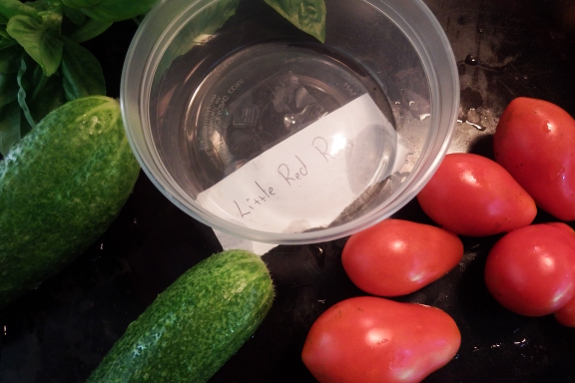
Step 1: Squeeze
the guts out of a few tomatoes, add water, then set aside to ferment.
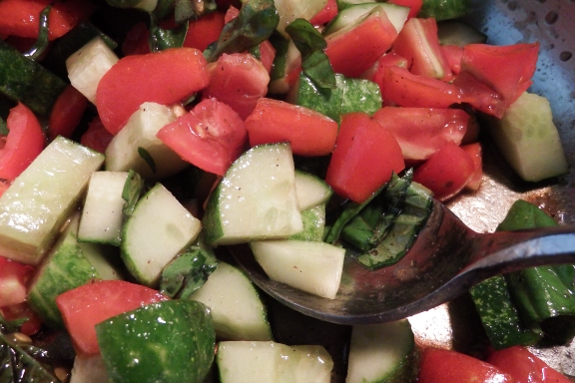
Step 2: Cut up the rest
of the flesh along with a couple of cucumbers, then add basil, balsamic
vinegar, and olive oil to make a summer salad.
Two tasks completed for
the price of one!
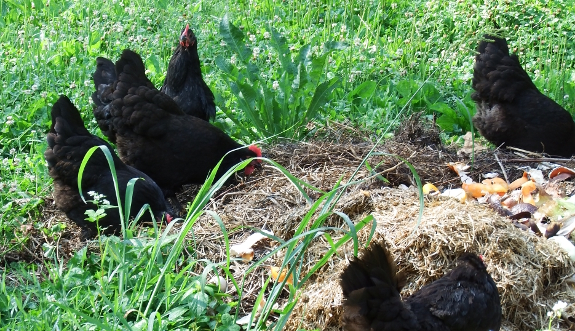
With our garden moved
over to the slow lane, we've been letting our chickens run wild. Of
course, the flock immediately gravitated to the closest compost pile
and hasn't left the area since.
A few hens have been willing to enjoy store-bought chicken feed in the
mornings, but most seem to think that worms and grubs and human food
scraps are vastly preferable. Now if I could just figure out where the
free-rangers are laying their eggs, we'd be enjoying no-cost food of
our own....
Our driveway is finally
driveable thanks to some dry weather.
What also helps is some trees
being cut down and a few loads of gravel.
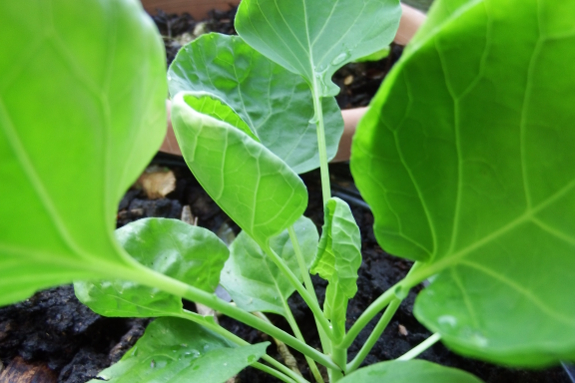
How are my transplants
doing after being potted
up into pure, well-rotted horse manure? They're thriving! There's
nothing like plenty of nitrogen and humus to make plants grow, grow,
grow.
To my surprise, celery
and a pepper bounced back after being moved from the aquaponics setup
out into a pot in the wild outdoors. Strawberries are already perking
back up from their initial transplant shock. And most of my herbs are
also putting out new leaves.
The one exception? A
huge clump of thyme that I tried to transplant promptly kicked the
bucket. Why is there never enough thyme?
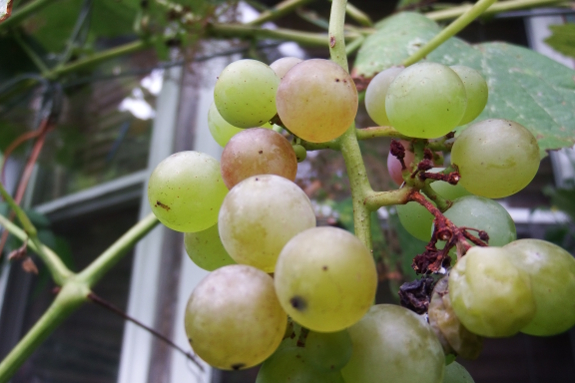
Our seedless grapes are
just starting to ripen, but Mark hasn't enjoyed one yet. They're right
outside the front window, and when I need to stretch my legs between
writing bursts, I can't help getting up and snagging one for a snack.
Do you think he'll believe it's the fault of birds if I tell him in a
few weeks that they're all gone?
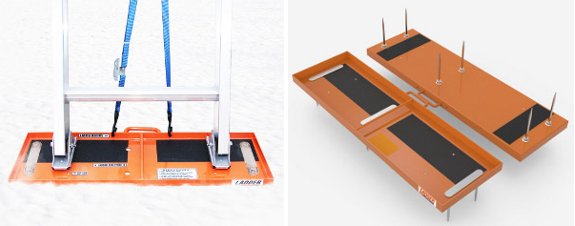
Anna and I have a strict
safety rule that says climbing on a ladder needs to have a helper close
by and sometimes the ladder needs to be held.
This new Ladder Lockdown plate seems
like a good idea that could save your life.

When I place them out in
the heat of the porch, it doesn't take long for tomato seeds
to begin to mold...and that's a good thing! I'll wait until the film of
fungus is a bit more intense than is shown in the photo on the right,
then I'll swish the seeds apart from their gelatinous casing. A few
days drying on a plate and the seeds will be ready to be packed away
for next year's garden.
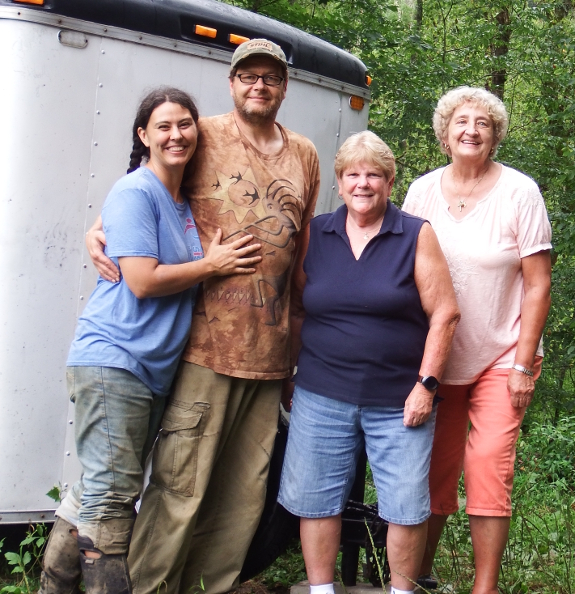
We got to spend a bit of
time with Rose Nell and Jayne while they were in the area this weekend.
It's always such a treat to hang out with such strong, kind ladies!
How did those apples taste
this year?
We'd have to ask the deer
that keeps snacking when they get ripe enough.
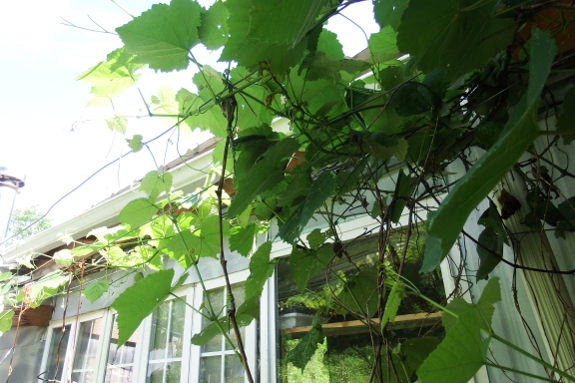
Technically,
permaculture zone 0 refers to your house (or, in our case, our
trailer). But I also like to include anything that touches the house in
that zone.
Eleven years ago, when
we first started homesteading, I was so excited to try out orchards and
livestock and other features of zone two and beyond that I put off
paying much attention to zone 0. However, as we've slowly filled in our
zone 0 over the last few years, I realized that this zone is really the
most important region because we spend most of our time here and get
the largest influx of energy from the features of this zone.
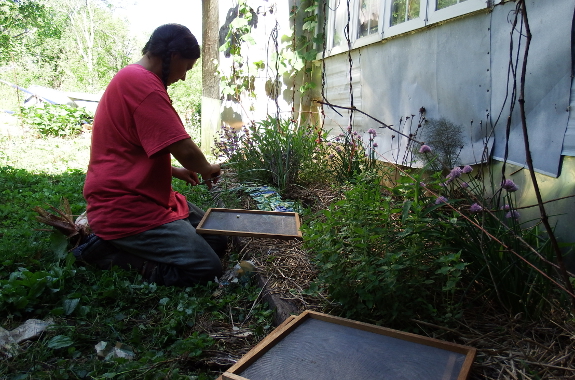
To that end, after our
move, I'm designating the rest of this summer, fall, and winter time
for zone 0. We'll be replicating some of our favorite aspects of this
trailer's zone 0 --- porches
for summer living, small rain
barrels for easy outside water, grapes
for summer shade, herb beds and
(maybe) a cold
frame around the perimeter, plus a mushroom-log
station on the north side.
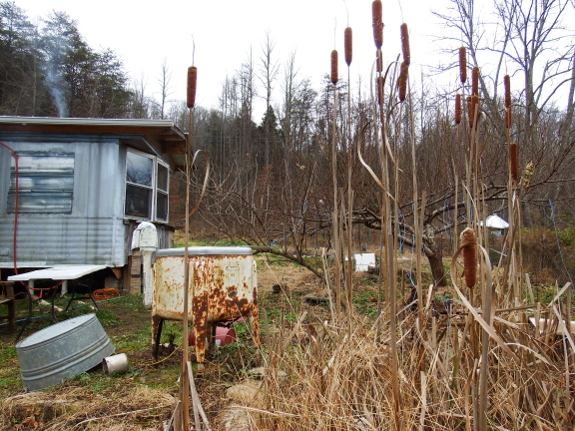
And, as I make this
list, I can see there's more to zone 0 than will fit into a few short
months. As we have time, we'll likely also add a graywater
system for the kitchen and laundry areas to take the load off the
expensive septic system we're having built. And we may also retrofit
windows to make a south-facing,
passive-solar wall...or instead do a little sunroom add-on to give
me a winter-gardening fix while also adding heat to the home. Finally,
we're bringing along our wood stoves and will need to retrofit whatever
trailer we buy to accommodate them.
That sounds like a lot,
but we'll likely hire out the bigger projects (porches) and take the
smaller ones a bit at a time. Regardless, I'm going to try hard to rein
in my larger dreams this time around so we don't do much else before
zone 0 is done. Well, except the vegetable garden. Gotta have my garden
even if that is solidly in zone 1....
One of the nice things about a plastic shed is how easy it comes apart.
Want more in-depth information? Browse through our books.
Or explore more posts by date or by subject.
About us: Anna Hess and Mark Hamilton spent over a decade living self-sufficiently in the mountains of Virginia before moving north to start over from scratch in the foothills of Ohio. They've experimented with permaculture, no-till gardening, trailersteading, home-based microbusinesses and much more, writing about their adventures in both blogs and books.

